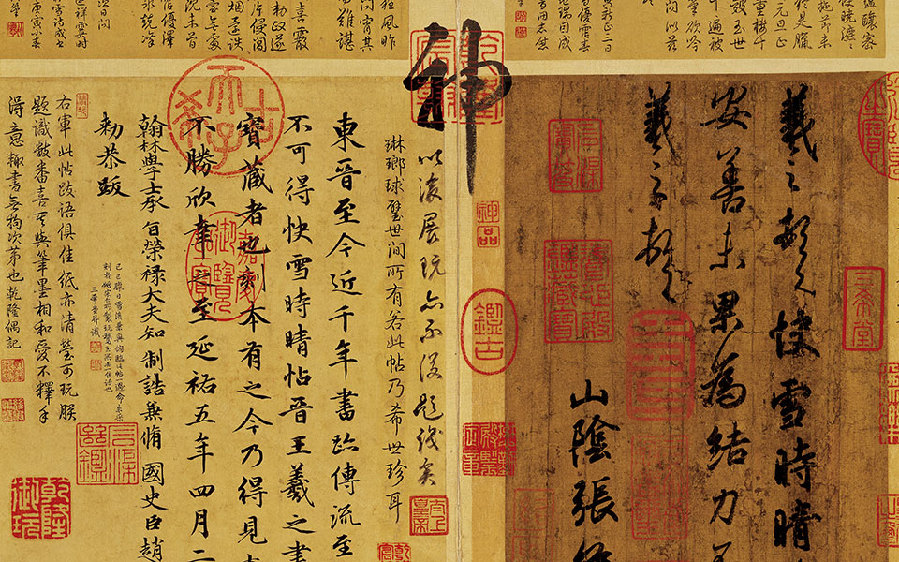Calligraphy is something every special for Chinese. It is not only an important part of traditional Chinese culture but also a way of life for people of all stripes.
Like oil painting and sculpture in the West, calligraphy is as much an artistic form as a spiritual anchor for many Chinese throughout history. Rarely does any other culture in human history fascinate with calligraphy in such a profound way.
From the invention of hieroglyphics to the evolution of various calligraphic scripts, calligraphy has played a critical role in Chinese culture and history for thousands of years.
Calligraphy was well-respected, or even worshiped in history. It was a foundation for scarcely available education opportunities, a steppingstone to become the elite class and a prerequisite for admiration among peers. In essence, calligraphy is also the cultural identity and the manifestation of collective aesthetic philosophy.
 |
|
Kuai Xue Shi Qing Tie by Wang Xizhi (part) [Photo/yueyaa.com] |
During Jin Dynasty (AD 265-420), calligraphy became an expression of superiority among noble families. The rivalries were so intense that young children were ordered to receive extensive training in calligraphy.
Wang Xizhi was among those raised in noble families. Along with his son, Wang Xianzhi, the Wangs were considered the greatest calligraphers in Chinese history whose achievements were insurmountable for late generations. Therefore, Jin Dynasty is the pinnacle of calligraphic works in Chinese history.
However, calligraphy inevitably intersected with politics in Chinese history.
In Tang Dynasty (AD 618-907), the Emperor Taizong not only revered Wang Xizhi's calligraphy, but himself was also good at it. He considered Wang Xizhi as the greatest calligrapher in history. His obsession with Wang Xizhi made him promote his subordinates based on their talents to mimic Wang's works.
Above all, the emperor regarded the Preface to the Orchid Pavilion Collection by Wang Xizhi as the best running script. Prized as his priceless treasure, the emperor kept Wang's works only for his most trusted subordinates and, after his death, he was buried along with Wang's works.
It was understood that calligraphy became one piece of matrices for the emperor to seek loyalty, unity and capability among his subordinates. Not surprisingly, Tang Dynasty was another Golden Age of Chinese calligraphy. A generation of great calligraphers, such as Ouyang Xun, Yu Shinan, Chu Suiliang, Yan Zhenqing, Sun Guoting, Liu Gongquan and many others, emerged whose calligraphic works also became masterpieces for later generations to emulate.